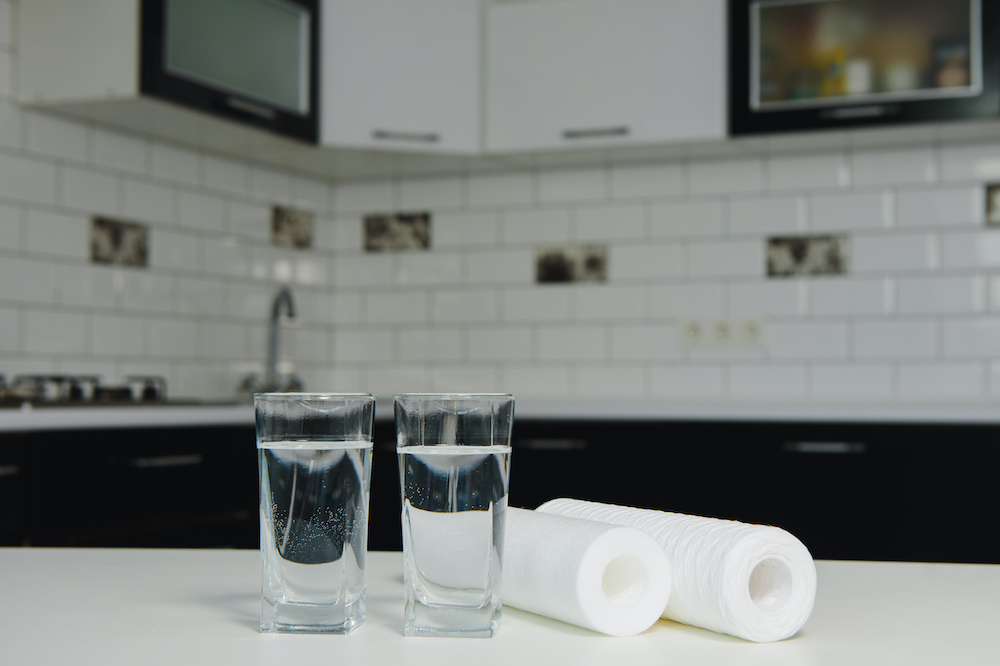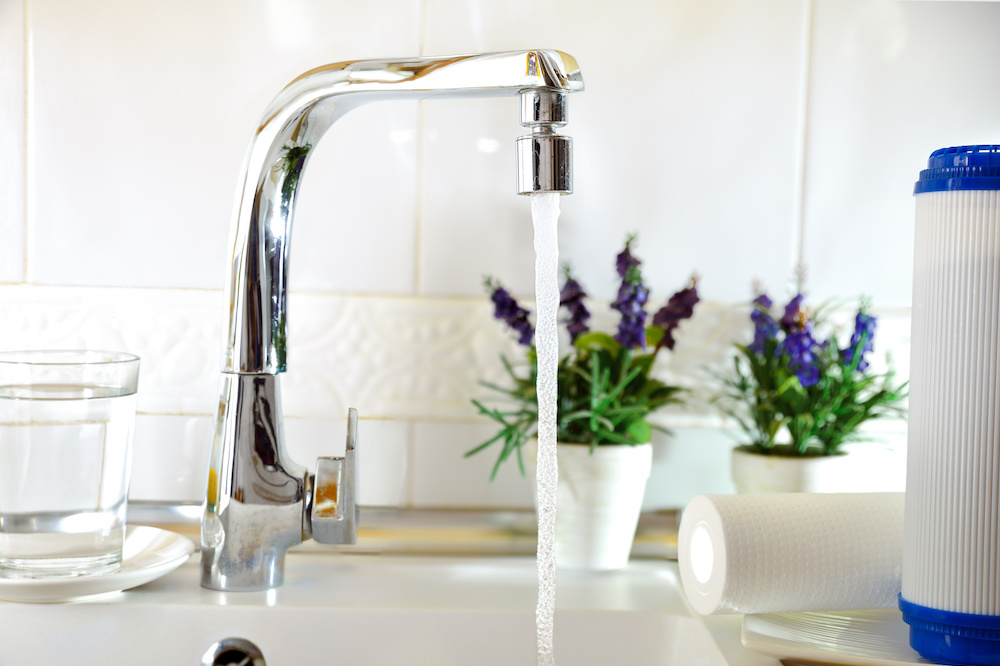Answering the question, “Is reverse osmosis water bad for you?” will give you peace of mind that your drinking water that won’t cause health issues.
The good news is that reverse osmosis water isn’t bad for your health.
While RO systems can strip water of certain beneficial minerals, health experts still agree that it shouldn’t impact one’s health as much.
That is provided that one eats a healthy diet. Also, many RO systems have a remineralization stage to add healthy minerals back into the filtered water.
Finally, reverse osmosis efficiently prevents waterborne diseases.
That said, if you’re still worried about whether it’s good or bad for you, we’ll further investigate the main points against reverse osmosis we just presented.
What Is Reverse Osmosis Water?
We are lucky to live in a digital world where information of all kinds is easily accessible.
For instance, researching the different drinking water options you have shouldn’t take more than a few minutes, as long as you have access to the internet.
The problem is that misinformation abounds as well. Thus, you are responsible for counter-checking the online data presented to you.
The type of drinking water we’ll discuss today is the product of the reverse osmosis filtration system.
In a nutshell, reverse osmosis is a water treatment method that involves using a semi-permeable membrane to filter up to 99% of contaminants.
According to the Centers for Disease Control and Prevention, reverse osmosis systems have a filter that has a pore size of 0.0001 microns.
It’s designed in a way that will only allow water molecules through, while efficiently filtering out other components present in the water.
That said, there are different types of reverse osmosis systems, typically categorized according to the filtration stages they have.
Depending on the quality of your reverse osmosis system, this water treatment method typically results in highly purified water.
Is Reverse Osmosis Water Bad for You?
If reverse osmosis water is pure water, what makes it so bad?
There are two most common concerns when it comes to using it as drinking water.
Concern #1: Reverse Osmosis Drinking Water Is Too Acidic
The primary concern people have with drinking reverse osmosis water is that it’s too acidic, with a pH level typically ranging from 6.0 to 6.5.
This is further highlighted by the growing popularity of alkaline water (and its accompanying health claims).
So how does reverse osmosis water get acidic?
Let’s take a quick trip back to science class. Pure water has the chemical symbol of H2O.
When H2O is exposed to open air, it also naturally absorbs the carbon dioxide (CO2) in the air. The result is carbonic acid (or H2CO3).
As the water gets purer, the more carbon dioxide it can also absorb, and thus, the more acidic it will get.
In addition, your water will lose the minerals that can make it more alkaline such as potassium, magnesium, and calcium.
Here’s Why You Shouldn’t Worry
As mentioned, some RO systems come with various filtering stages.
You will be pleased to learn that some of these units have a remineralization stage that seeks to add back healthy minerals.
What’s great is that this gives you more control over the components in your drinking water.
Also, although reverse osmosis water can be slightly lower than U.S. Environmental Protection Agency’s drinking water standard of 6.5 to 8.5, this isn’t due to the presence of contaminants.
Rather, it’s because of the absence of both contaminants and healthy minerals, so it’s still safe to drink.
In fact, there are a lot of drinks that are significantly more acidic than RO water, such as fruit juices and carbonated drinks.
Concern #2: Drinking Water Produced By Reverse Osmosis Filtration Doesn’t Have Minerals
Another common concern is that one might suffer from a nutrient deficiency due to reduced mineral intake.
Aside from that, there is the claim that the human body absorbs minerals better from water than from food.
Here’s Why You Shouldn’t Worry
According to an article published by the Water Conditioning & Purification International Magazine, it doesn’t matter which form of a mineral you ingest.
Whether the beneficial mineral will come from food or drink, it will still be metabolized and excreted by the body in the same way.
In addition, even water sources with high hardness levels would only be enough to cover around 6% of the recommended dietary allowance.
It means that you would still need to rely on a healthy, balanced diet to get your essential minerals, and not from your drinking water.
Finally, as mentioned, some RO systems are designed to remineralize your drinking water.

What Are the Benefits of Drinking Reverse Osmosis Water?
Now that we’ve discussed the most common concerns about reverse osmosis, let’s move on to its main benefits.
Reverse Osmosis Gets Rid of Almost All Contaminants
While many of us are fortunate to have access to relatively clean water here in the U.S., there are still those of us who are exposed to poor water quality, as there are many sources of potential contamination, even for municipal water.
Fortunately, getting an RO system installed can help. After all, many reverse osmosis systems can get rid of most unwanted contaminants, including heavy metals and chemicals.
Some of the pollutants that reverse osmosis water filters can filter include lead, arsenic, and fluoride, just to name a few.
Reverse Osmosis Filtration Can Prevent Waterborne Diseases
Bacteria and viruses can be a problem too. Contaminated water exposes you to Salmonella, E. coli, Rotavirus, and other troubling microorganisms that cause waterborne diseases.
According to the World Health Organization, unsafe drinking water is a pressing global problem.
They have found that at least two billion people are exposed to contaminated water daily.
Sadly, this also leads to almost 500,000 deaths annually.
Fortunately, these harmful microorganisms are among the impurities that RO filters can get rid of.
Reverse Osmosis Water Filtration Is a Great Cooking Companion
Another benefit reverse osmosis water offers is its pure, clean taste, making it a great alternative for those who don’t like the taste of their tap water.
Let’s face it; sometimes, even the healthier components in your water produce a weird taste.
These components may also interact with certain ingredients, making many types of drinking water less than ideal for cooking.
That is why we highly recommend getting an RO system for your home if you love cooking.
Will RO Water Affect Your Alkaline Diet?
We understand the trends behind drinking alkaline water and adhering to an alkaline diet. After all, too much acidity has potential health consequences.
Case in point: according to the Cancer Treatment Centers of America, suffering from gastroesophageal reflux disease (or GERD) can increase the risk of developing the pre-cancerous condition, Barrett’s Esophagus.
However, it is important to remember that our body has its own way of stabilizing our pH levels.
Although some would say that alkaline water is better for you, many health experts still say that what we drink has little effect on our body’s acidity (or alkalinity, for that matter).
How to Test Your RO Water’s Acidity
If you’re really worried about the acidity of your reverse osmosis water, testing it might give you peace of mind.
Here are the different ways to do so:
pH Strips
These are strips of paper specifically designed to change colors to determine the acidity or alkalinity of a liquid.
We recommend getting a strip intended to test between pH 5.5 and 8.5.
This is the range that most RO-filtered water will fall under.
As such, it can give you a more accurate result than strips with a broader range.
Litmus Paper
While litmus strips are not as accurate as pH strips (they can only change between two colors), they can still give you an idea of whether a liquid is acidic.
However, please keep in mind that there is a possibility that your RO water won’t show as acidic.
The result will depend on the quality of your litmus paper strip.
Red Cabbage
We are not kidding. Interestingly, red cabbages have a pigment that is particularly sensitive to pH levels.
If you want to give this fun little experiment a try, then you may follow these steps:
- Blend your red cabbage leaves with water
- Strain the liquid to remove the small chunks of cabbage
- You may now add your RO water to the strained liquid and mix it thoroughly.
- Wait for a while. You’ll see that the mixture will slowly turn red if your water is acidic.
Digital Testers
Here’s a testing tool that’s a little bit more advanced than strips and leafy veggies. Many of these digital water testers come in the form of a pen.
You will then need to dip one end of this pen into a glass of water. Your results should show after a moment.
Some of these meters come with a packet of a solution that you can use to calibrate your device.
Make sure you don’t skip this step before using your device if it requires one, as it will greatly impact its efficiency and accuracy.
You also need to rinse other pH meters with distilled water and wipe them down to dry to protect their sensor or glass probe (depending on your brand or model).
Don’t worry. Your tool should come with detailed instructions on how to use and care for it.
Professional Testing
If you’re like us and really want to know what’s lurking in your water, you might want to consider getting your water professionally tested instead.
Many universities, local government facilities, and water testing companies offer ree basic water testing. You don’t even need to live within their vicinity.
Some of these testing facilities provide a special kit that you can use to collect your water.
You may then send it back to the lab to be tested.
If you choose a local water treatment company, they will come out and do a basic water test with immediate results. Then they can advise you on how to address any issues.
What’s great about this option is how much insight you’ll get about your water.
Not only will it reveal a more accurate picture of its pH levels, but it’ll also reveal other aspects of your RO water.
However, if you want more than just a basic water test, you’ll have to send a sample off to full scale lab that can test it for a wide range of contaminants
The cost of this can range from $200 to $700 depending on the contaminants you are looking to uncover.
Most of these testing facilities send their detailed results after a few weeks.
Reverse Osmosis Water and Your Health
It is wise to ask, is reverse osmosis water bad for you? In fact, you should do this for all the different drinking water options out there.
After all, our body is mostly made up of water. As such, the quality of the water we drink would certainly impact our health.
As for RO water, yes, it is safe to drink. It is not bad for your health; in fact, it even offers its own set of health benefits.
What we are more worried about are the potential contaminants that might be lurking in your family’s drinking water should you skip getting an RO system.

